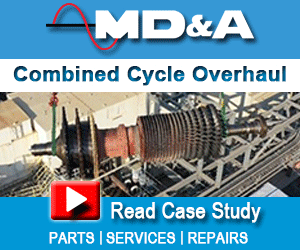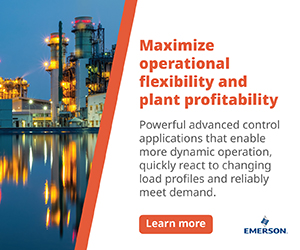High wheel-space temperature issues were discussed by an owner/operator with three 42-MW 6Bs (Model 6581B) that had been commissioned in 2003. Two units completed their second major inspections in 2018, the third in 2019. High temperatures were noticed in the second and third turbine stages of one machine during startup following the major inspection.
The root-cause analysis (RCA) by plant personnel was thorough. The investigation reviewed the following possible causes or contributors to the issue:
-
- People: T/C installation method, installation restriction, space restriction, air filtration, and filter house.
- Equipment: damaged T/C wiring, improper installation, functionality check (yes, no, results?), T/C integrity, broken T/Cs.
- Material (HGP components): T/C source (new, refurbished?), borescope, cooling, condition of nozzles, condition of buckets, repair history.
- Measurements and seal clearances: Shroud clearances, nozzle clearances, bucket clearances, turbine clearances, diaphragms.
The findings:
-
- Wrong insertion. T/C was reading diaphragm temperature because the insertion length was incorrect. Recall the advice offered in the best practice from Part I of CCJ ONsite’s coverage of the 2019 Frame 6 meeting: Replacement of wheel-space T/Cs can be challenging. Before carefully removing the defective T/C to avoid breakage, use a Sharpie® marker to indicate the proper depth of insertion and mark the replacement T/C accordingly so you know when it’s fully inserted.
- Investigators found the T/C guide-tube cap was machined incorrectly, preventing the T/Cs from reaching the ends of their caps. When corrections were made the T/Cs installed smoothly to the correct insertion length.
Lessons learned:
-
- High wheel-space temperature is a common problem on 6Bs.
- During a major inspection, before installing the turbine casing, make sure the wheel-space T/Cs are installed correctly.
- Borescope T/C guide tubes.
- Apply heat on the T/C guide-tube caps and verify response via the control system.
- Teamwork involving all personnel with expertise to share is critical to rapid problem-solving.
The exhaust-plenum replacement case history had some twists and turns. One of the principal vendors being considered for this project emailed plant personnel the following message on a Monday morning in April 2019: Our company will be shutting its doors for business as of today. It is a Chapter 7 bankruptcy, not Chapter 11, which allows for a financial reorganization of the firm. Most employees were laid off on that day.
The week had to get better from that point forward.
Interestingly, another candidate vendor for this project, Shock Manufacturing, was formed about six years earlier by Gene Schockemoehl, who had previously been president of the company filing for bankruptcy. Turns out, Schock had a plenum design plant personnel believed more durable than that offered by the bankrupt company.
It features closely spaced, large-diameter Type-304 stainless steel pins to hold the insulation in place between the inner and outer shells of the plenum. Pins are welded directly to the outer casing where the temperature is between about 150F and 170F during operation.
Welds for the scallop-bar design offered by the bankrupt company, by contrast, are on the hot side of the exhaust casing where the temperature is more than 1000F. Frequent cycling is conducive to studs shearing off at the top of the bar and failure of the insulation system.
Rotor life extension is a topic on the minds of many 6B owner/operators because operating hours accumulate quickly in process plants that run continuously. Recall that the OEM requires inspections, refurbishment, and/or replacement of B- and E-technology rotors at 5000 factored starts or 200,000 factored hours, whichever comes first (to dig deeper, consult the latest versions of TIL-1576 and GER 3620). For most attendees at this user-group meeting, the hours limit is applicable.
The user presenting sees a 200,000-hour rotor lifetime evaluation (LTE) for his 6B without merit because the best you can do after spending all the money for the inspections, component refurbishments, new consumable parts, etc, is get approval to run another 100,000 hours (about eight years at his plant). The alternative he prefers is to bring the rotor into a qualified shop, replace all of its life-limiting components, and extend rotor lifetime by 200,000 hours.
He told the group that this course of action would involve the following at a minimum:
-
- Replace the last three or four stages of compressor wheels.
- Replace all compressor blades.
- Replace some turbine wheels and spacers.
- Replace all tie bolts and marriage bolts.





